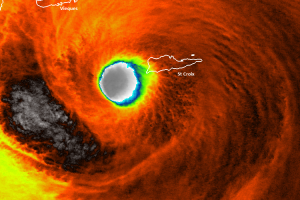Cyclone Mora hit the southeast coast of Bangladesh early Tuesday, May 30, damaging thousands of homes in coastal villages and camps housing refugees from Myanmar.
The Bangladesh Meteorological Department said the storm made landfall around 6 a.m. (midnight GMT) in the area between Cox’s Bazar port and Chittagong.
At least five people were reported killed after Mora made landfall. BBC reported that most were killed by falling trees in the Cox’s Bazar and Rangamati districts.
Hundreds of thousands flee as cyclone batters Bangladesh #CycloneMora pic.twitter.com/pgTGVVPVi2
— AFP news agency (@AFP) May 30, 2017
On Monday, the department increased the country’s storm danger level to 10 – the highest level ahead of landfall.
Around 449,000 people in the Cox’s Bazar and Chittagong districts were evacuated to cyclone shelters, schools and government offices. One community leader in Cox’s Bazar told the Straits Times that 20,000 homes were damaged in the district and some residents were injured.
Officials had warned that the storm would likely cause coastal areas to be “inundated with a storm surge of four to five feet” above normal levels.
Tropical Cyclone Mora moving towards Bangladesh and is showing signs of strengthening. pic.twitter.com/PzCHLKOog4
— Collin Gross (@CollinGrossWx) May 30, 2017
The Straits Times reported that there were no efforts to evacuate the refugees from the camps in Cox’s Bazar district. About 300,000 Rohingya refugees live in the Cox’s Bazaar district, with some 70,000 of them arriving since October.
On Tuesday, Reuters reported, citing Rohingya community leader Shamsul Alam, that almost all 10,000 of the thatched huts in the Balukhali and Kutupalong refugee camps were destroyed. A UN official said most of the people had remained in the settlements during the storm.
Cyclone Mora is expected to gradually weaken as it moves north. The warning level for maritime ports has been lowered to three from 10 in Chittagong and Cox’s Bazar and from eight in Mongla and Payra. The Bangladesh Meteorological Department advised fishing boats and trawlers to remain in shelter until 9 p.m. on Tuesday.
Flooding in Sri Lanka
Cyclone Mora hit Bangladesh as neighboring Sri Lanka begins to recover from the effects of the storm. Heavy rains triggered widespread flooding and landslides that killed at least 177 people.
Flooding cut access to many rural villages in the island, forcing nearly 75,000 people out of their homes. The lack of access is also hampering relief efforts in what is the country’s most widespread disaster since the December 2004 tsunami.
Sri Lanka typically floods during the southern monsoon season from May to September, the wettest time of the year in the country. Heavy rains also occur from November to February during the North West monsoon season.
Singapore has offered to donate $100,000 to support relief efforts in Sri Lanka, according to letters written by the country’s Prime Minister Lee Hsien Loong and Foreign Affairs Minister Vivian Balakrishnan to their Sri Lankan counterparts.






